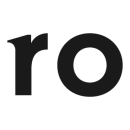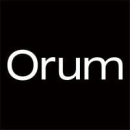In the art of storytelling, communication is essential.
But in the case of ancient myths and well-documented folklore, syntax and meaning can mutate the further the story travels from the source. A misunderstood plot point can get passed on like a game of telephone, and suddenly the Big Bad Wolf emerges as the hero of the story instead of the ravenous antagonist — thanks to one rogue piece of information.
In business, product roadmaps function the same way.
“Communication is the job of product management — it’s required to help your team focus and your stakeholders remain confident in your plans,” said Lukas Thoms, head of product at GlossGenius.
Without proper alignment, documentation and check-ins to evaluate progress, the original roadmap can become convoluted and intentions can fail to deliver. For Thoms, clear communication is not only useful at the beauty and wellness business management platform — it’s essential. By regularly communicating about roadmap goals, processes and changes, teams and stakeholders remain in sync with the initial product mission.
“It will keep them bought in and keep things moving smoothly,” Thoms said.
Clear documentation throughout the product roadmap journey also allows product managers to “show, not tell” in order to maintain cohesive alignment. For teams at guest experience platform SevenRooms, this step has been crucial in allowing product teams to understand different stakeholder perspectives.
“That way we’re able to find out if there are any questions or issues sooner rather than later, and we can document all major decisions along the way,” said Jasmine Yeh, technical product manager.
Built In NYC sat down with Thoms, Yeh and five other product experts to learn why effective communication is an essential piece of the product roadmap — and all the crystal-clear stories they’ve told to get there.

Ontra is a cloud and legal tech company that combines the power of AI with a network of global lawyers to provide contract automation and intelligence to its clients.
How do you ensure there’s alignment across teams from the outset when developing a product roadmap?
We first get buy-in on our research and development (R&D) team roadmaps from internal business stakeholders. R&D leaders plan our objectives and key results (OKRs) in support of quarterly and annual company OKRs and goals. Then we ensure alignment within and across each R&D team.
Next, our R&D teams meet to agree on quarterly commitments and measurements in support of the R&D OKRs. Then we kick off the projects with product, engineering, data, design, QA, and in some cases, machine learning teams. At all times, we make sure everything we build supports the final product vision.
Once we ship a feature, we analyze application interactions to see if users are engaging with it. We also monitor other metrics for success — such as time to complete workflows — to confirm a streamlined experience. Customer success and our business stakeholders also provide feedback since they’re closest to clients.
We called upon these principles with an upcoming feature release on Insight, Ontra’s AI-powered SaaS fund management solution, first capturing this top R&D priority in our R&D OKRs. Then the R&D team spent a week discussing the remaining features to build and their scope, and planning how to deliver effectively this quarter.
How did you maintain that alignment throughout the development cycle?
When working on the new Insight feature, the product team lived up to our company values through radically transparent communications and extreme flexibility. We charted a course forward confidently, but kept an eye out for road bumps and stayed open to new information that might change the path.
Our product managers met with the various stakeholders and team members at least once a week during the development cycle. We went into each meeting with an agenda and goal in mind, and kept the discussions as productive as possible. We ensured each meeting ended with specific action items and owners so that we stayed on track to move the project forward. On top of that, we followed general R&D and company practice of maintaining open communication channels and over-communicating. That means everyone in the company had visibility into the project and could raise concerns or suggest ideas.
In general, it’s common practice to raise flags or concerns early. For example, say a business stakeholder reports that a bug might be impacting priority clients. As we assess the scope, we inform engineering so they have a heads up. If it becomes clear that the impact of a bug is high enough to disrupt our sprint cycle, we work with the team to address the bug with minimal impact to the planned work.
When working on the new Insight feature, the product team lived up to our company values through radically transparent communications and extreme flexibility.”
Did the project needs change during the development process? And if so, how did you re-prioritize the product roadmap and keep teams aligned?
During the release of that new feature for Insight, the R&D team discovered additional complexity that would significantly expand the development timeline. So, a smaller group met to brainstorm on options. Once the team felt confident proposing a path forward, it suggested bringing on another team to help build the feature.
The group proposing this had determined the team could postpone work on a lower-priority feature to help with this priority project. And, because we operate within an Agile environment, that team could do so without impacting their ability to deliver on their own OKR commitments.
Once our business stakeholders had been informed and agreed to the proposal, we moved forward. In other words, we reprioritized the product roadmap while keeping teams aligned. While this isn’t something we do regularly, it’s a muscle we can flex.
GlossGenius is a POS and business management system for beauty and wellness businesses.
How do you ensure there’s alignment across teams from the outset when developing a product roadmap?
Start with the goals. People naturally think in terms of features, solutions and the experience they think will be most useful to users. While obviously this is important, any conversation that starts here is bound to go in circles because there are more valuable things to build than you have resources to build them.
Instead, start your thinking — and every conversation — by aligning on what great outcomes look like, and starting every conversation with them. This way you can easily focus the conversation on what is most likely to impact your customers and your business, and easily discard distracting ideas with the simple question: “Do you think that is most likely to drive the outcomes we’ve agreed on?”
Share early. Sharing your goals and your ideas on how to accomplish those goals, as soon as you can with your stakeholders, doesn’t just avoid surprises later: it also gives your stakeholders an opportunity to participate in the solution, get their buy-in and make sure they feel heard.
How did you maintain that alignment throughout the development cycle?
Communicate, communicate, communicate. Communication is the job of product management — it’s required to help your team focus and your stakeholders remain confident in your plans. Communicate your goals, communicate your hypotheses about how to accomplish those goals, and communicate your plan on how to validate those hypotheses either with data or by shipping something small quickly to generate that data.
Talk with your stakeholders and figure out a lightweight way to regularly update all of them: Perhaps it’s an email, a Slack message or a Notion document. The medium doesn't matter, only that it’s a place where everyone is paying attention.
Continue learning and share those learnings with everyone. When you learn something new about your users, continually re-evaluate if what you’re building is the right thing. If it is, share those learnings. If it isn’t, share those learnings too and bring your team along in figuring out the new path ahead of you.
Roadmaps and the processes around setting them should always be subject to change, and you should be setting your stakeholder’s expectations accordingly.”
Did the project needs change during the development process? And if so, how did you re-prioritize the product roadmap and keep teams aligned?
First and foremost, set expectations up front: Project needs can and probably will change in the face of new information. Maybe you uncovered a new, bigger user need. Maybe your engineering team realized there was an easier way to do something you’d scoped out of your MVP. Roadmaps and the processes around setting them should always be subject to change, and you should be setting your stakeholder’s expectations accordingly.
Keep a running list of everyone who is impacted by your current roadmap. When things do inevitably change, start by explaining why the conditions have changed and invite your team and stakeholders to provide input into the new plan. Bringing along your team and stakeholders with changes to plans in the same way you did when you originally developed it will keep them bought in and keep things moving smoothly.
Ro provides a vertically integrated primary care platform that is meant to give patients an end-to-end healthcare experience while also being more accessible.
How do you ensure there’s alignment across teams from the outset when developing a product roadmap?
Co-creating solutions is the best way to generate and maintain alignment across cross-functional partners. I work on our mobile app, and we’ve leaned heavily on project kickoffs to generate alignment while also giving cross-functional stakeholders an opportunity to contribute to the roadmap and solutions.
For example, we’re iterating on our Discovery experience in the mobile app. We set up a kickoff across product, design, engineering, data and some of our leadership team to align on: the problems we’re trying to solve, the goals of the Discovery experience and the scope of the project. It was tremendously helpful to have those philosophical discussions at the onset of the project so we were all in lockstep when we went to build.
How did you maintain that alignment throughout the development cycle?
Dedicated Slack project channels and regular, bi-weekly meetings to communicate any shifts in scope, timelines and blockers. Sometimes we didn’t end up needing them, but it does provide a low-friction forum to jump on a Google Hangout and quickly work through problems versus feeling reluctant to schedule ad hoc meetings until they become necessary. I think this generally helps cultivate a feeling of co-ownership as well.
Co-creating solutions is the best way to generate and maintain alignment across cross-functional partners.”
Did the project needs change during the development process? And if so, how did you re-prioritize the product roadmap and keep teams aligned?
Oh, yes — too many to count! For example, we ran into performance issues when developing some launch-blocking features for the app, and we needed to re-prioritize to focus efforts on ensuring the app was both reliable and stable. We developed a set of criteria and benchmarks to help align our team, stakeholders and teams across the org on what success looked like, as well as explain why we shifted priorities. Then we communicated every week against those consistent criteria so we were able to keep everyone aligned and involved as we made progress.
SevenRooms is a guest experience and retention platform for the hospitality industry.
How do you ensure there’s alignment across teams from the outset when developing a product roadmap?
At SevenRooms, I’ve found that there are three main driving forces to ensure that everyone is aligned.
Awareness helps the teams understand what the problem is, why we’re solving it and its impact. By doing this, you create ownership. Collaboration allows us to listen to teams and get input. Find out if there are any roadblocks and address them. As a product manager, it’s your job to be the connective tissue between the go-to-market, engineering and customer adoption teams. Communication is important for providing updates in a timely and precise manner. “Show, don’t tell” the reasoning behind certain decisions and give data to back it up.
Recently, we launched a new integration for our customers. Before starting development, I had to decide whether we’d pursue the next feature on our product roadmap or build a new integration. It was unclear if the next priority was valuable to our users, while the new integration would increase our serviceable obtainable market (SOM) — I chose the latter. During that time, I communicated the decision, worked with several teams to validate the decision and gave clear reasoning. It was the right choice and we’ve been excited to see the feedback.
How did you maintain that alignment throughout the development cycle?
Out of the three driving forces, consistent communication is the key ingredient to maintaining alignment. Our stakeholders frequently check in with one another to ensure we’re on the right track. That way we’re able to find out if there are any questions or issues sooner rather than later, and we can document all major decisions along the way.
Part of this is bringing in stakeholders as early as possible. This allows you to understand different perspectives and what outcomes are important to the team. You can also get feedback earlier in the cycle.
As a product manager, it’s your job to be the connective tissue between the go-to-market, engineering and customer adoption teams.”
Did the project needs change during the development process? And if so, how did you re-prioritize the product roadmap and keep teams aligned?
Our restaurant operators love the ability to see their guests’ entire dining journey. They can follow their experience from the moment a guest makes a reservation or walks up to the host stand, all the way to when they pay the bill and how they interact with the restaurant brand through marketing post-experience.
The SevenRooms platform can collect a treasure trove of data for our operators through our POS integrations. This enables them to utilize our reporting capabilities and see trends for revenue capture, including who their top spenders or most frequent visitors are, ultimately enriching their guest database.
Operators can use that guest data to then drive repeat visits with our marketing automation features. It’s a virtuous cycle. It’s exciting for both our clients and us when we see how different parts of our product work together to both generate more revenue for them and create magical moments for their guests.
Hiro Systems builds developer tools for Stacks, the network that enables apps and smart contracts for Bitcoin.
How do you ensure there’s alignment across teams from the outset when developing a product roadmap?
Alignment starts from the top. At Hiro, we are a small team and leadership sets the stage with a mission statement and strategic objectives, which serve as the guardrail for the product and the cross-functional teams.
For roadmaps, you listen, process the inputs and course correct — which sounds easy, but may not be straightforward in practice. No matter how many dimensions, scientific approaches or data points you analyze, the product manager’s judgment determines the impactful themes to invest in and intentionally says “no” after internalizing the trade-offs. With the deliberate investment allocation aligned with company-level objectives and attributing to the anticipated business impacts, the product and engineering lead huddle before each quarter to dive deeper into each theme — and break them down into incremental scope that can be iteratively delivered and evaluated to facilitate a continuous feedback loop.
How did you maintain that alignment throughout the development cycle?
As the quarterly objectives get defined throughout the process and product development progresses, the product is deeply immersed in the journey with design and engineering to continue to drive alignment, clarify ambiguity and expand on the acceptance. Communication is vital throughout this journey and requires translating details at different fidelities for different audiences.
At the granular level, given the humble-sized team at Hiro, the engineering, product and design teams meet regularly to plan for the week ahead and transparently talk through key result updates as we progress. As we zoom out, we have also established a monthly discussion with the leadership team to dive deeper into key results. The cross-functional team’s key results, learnings and progress are presented in the company all-hands meeting for broader visibility. With this operating model, everyone is aligned and can follow along.
The engineering, product and design teams meet regularly to plan for the week ahead and transparently talk through key result updates as we progress.”
Did the project needs change during the development process? And if so, how did you re-prioritize the product roadmap and keep teams aligned?
We are obsessed with developers and deeply care about their productivity when building applications on the Stacks blockchain, and our product strategy builds atop open-source. This brings additional helpful context from end users but further complicates the competing priorities, including demanding developer requirements and the product’s deliberate passion for grooming and maintaining healthy open-source community dynamics.
Besides that, Hiro being the de-facto developer tooling company for Stacks, our success is the virtue of Stacks being successful. For instance, the Stacks v2.1 release compatibility in Hiro’s developer-facing tools is the highest priority. At the beginning of the quarter, when we defined the quarterly objectives, we had hypothesized the compatibility to be a straightforward integration, but it turned out not. Naturally, we had to course correct to reallocate the team's focus to get the Stacks v2.1 compatibility ironed out.
Now, when Stacks v2.1 goes live, developers who upgrade to this release can seamlessly upgrade Hiro’s developer-facing tools without disruption — we proactively tackled the challenges by readying our products so developers don't have to.
Dailymotion is a video platform for discovering the latest events in news, sports, entertainment, music and more.
How do you ensure there’s alignment across teams from the outset when developing a product roadmap?
One of our recent projects is the impact of browser restrictions, like the end of third-party cookies to our Player technology and our advertising solution. We had to work on a unique roadmap to ensure everything was considered.
It is crucial to create a task force — essentially people from different teams who meet virtually and share knowledge about this topic to work on an aligned product roadmap. Doing that ensures that we consider all aspects of our business: technical, business, product, data, legal, marketing and more. We assess the potential business impact, conduct proper market research to see where the market is heading, and plan the product roadmap moving forward.
How did you maintain that alignment throughout the development cycle?
We share results and build alignment outside the task force with dedicated demo sessions after our main development cycles throughout the year. We have task force members who constantly distribute new information to other team members. We use open, asynchronous communication channels where everyone is invited to join dedicated projects for questions, share knowledge, give feedback and hold any other kind of discussion to make sure people can be part of our product development efforts. This helps us to work efficiently across the globe from our offices in Europe, Asia, the U.S. and for people who work remotely.
It is crucial to create a task force — essentially people from different teams who meet virtually and share knowledge on an aligned product roadmap.”
Did the project needs change during the development process? And if so, how did you re-prioritize the product roadmap and keep teams aligned?
Yes, our industry is changing very quickly and we need to be able to adapt to it. The roadmap gives the direction for the teams we are heading to, and we need to be flexible based on opportunities and changes in the market. We build small prototypes, check the result quickly and see if it works as expected. Then, based on the results or other changing requirements, we constantly adapt our product roadmap and our go-to-market strategy across teams.
Orum provides enterprises with an automated, machine learning-based platform that enables fluid money transfers at any time, any day of the year.
How do you ensure there’s alignment across teams from the outset when developing a product roadmap?
When it comes to making sure product is aligned with other teams, looping people in at the right time during the process is crucial. Our team needs to make sure that we alert engineering, operations and compliance early on, for instance, to make sure we are iterating on what our proposals are consistently throughout the process. That way everyone has the right context and when things come up, there is this foundational level of information.
How did you maintain that alignment throughout the development cycle?
Communication. Given our early stage, we’ve found it extremely helpful to hold a pre-mortem for the “first” of anything so we can ensure communication is strong and that any uncertainties or potential blockers are addressed. For example, the first time we went live with a payouts use case, we held a pre-mortem to ensure we had questions answered and we did the same the first time we went live with a use case that involved wires.
We’ve found it extremely helpful to hold a pre-mortem for the ‘first’ of anything so we can ensure communication is strong and that any uncertainties are addressed.”
Did the project needs change during the development process? And if so, how did you re-prioritize the product roadmap and keep teams aligned?
Last month, we rolled out a new version of our API with the goal of enabling a simplified, more intuitive developer experience, while also providing additional clarifying information that will enable our customers to best serve their end users. As we were in the planning and build phases, it became increasingly clear which of the features in the new version were top priorities for many of our customers. In this situation, rather than saying V2 would be live on a certain date, we decided to launch the new version in phases, which required close communication between the team building the new version and the teams communicating with customers.


















